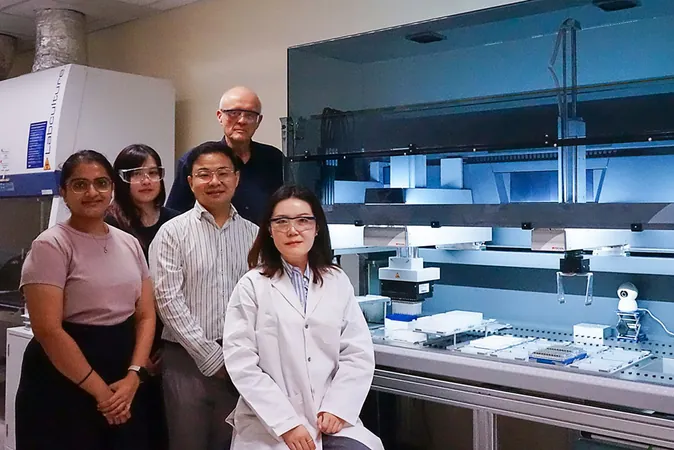
Revolutionary RNA Tool Set to Transform Cancer and Infectious Disease Research
2025-09-11
Author: John Tan
In a groundbreaking development, researchers at the Singapore-MIT Alliance for Research and Technology (SMART) have unveiled a cutting-edge tool that can revolutionize how scientists study cancer and antibiotic-resistant infections. This innovative device scans thousands of biological samples to detect tiny yet crucial modifications in transfer ribonucleic acid (tRNA), which play a pivotal role in regulating cell growth and responses to disease.
Unlocking the Secrets of RNA Modifications
The SMART team's latest advancement promises to propel healthcare and scientific research forward, enabling faster disease analysis, precise diagnostics, and the creation of more effective medical treatments. Collaborating with experts from top institutions, including MIT and Nanyang Technological University, they aim to decode the complex landscape of RNA modifications — over 170 types that control cellular behaviors.
Breaking Down Challenges in RNA Profiling
Traditional methods of studying RNA modifications are often slow and labor-intensive, relying on hazardous chemicals that hinder research capabilities. The SMART team’s solution offers rapid, automated profiling of tRNA modifications, a game-changer for discovering how these molecular changes affect cell survival and response to various stressors, including disease.
Revealing Untapped Potential in Bacterial Research
Published in the journal Nucleic Acids Research, the team’s findings have already spotlighted previously unknown RNA-modifying enzymes and intricate gene regulatory networks critical for bacterial adaptability. By analyzing over 5,700 genetically altered strains of Pseudomonas aeruginosa, researchers produced over 200,000 data points, unveiling significant insights into how bacteria survive in hostile environments.
A Leap Forward in RNA Analysis Technology
This innovative system stands as the first of its kind capable of high-scale, quantitative tRNA profiling. Integrating robotic technology, it minimizes hazardous chemical use and slashes research costs while boosting safety and efficiency. Scientists can now routinely conduct large-scale studies with the potential to unlock new therapeutic and diagnostic avenues.
Empowering Future Healthcare Solutions
The uses of this transformative tool extend beyond the laboratory; its potential spans across pharmaceutical and biotech industries, accelerating drug discovery and the identification of novel biomarkers. As Jingjing Sun, a lead researcher at SMART, notes, this tool not only facilitates the profiling of RNA modifications en masse but ushers in a new era of accessible epitranscriptomic analysis.
Future Visions: A Path to Human Applications
Looking ahead, SMART aims to broaden the tool's application to human cells and tissues, paving the way for deeper insights into human disease mechanisms. By integrating these findings into clinical research, they hope to fast-track the discovery of vital biomarkers and therapeutic targets, ultimately improving personalized treatment strategies across healthcare.
The impact of this revolutionary RNA tool could be monumental, addressing urgent global health challenges by enhancing our understanding of diseases at a molecular level.



 Brasil (PT)
Brasil (PT)
 Canada (EN)
Canada (EN)
 Chile (ES)
Chile (ES)
 Česko (CS)
Česko (CS)
 대한민국 (KO)
대한민국 (KO)
 España (ES)
España (ES)
 France (FR)
France (FR)
 Hong Kong (EN)
Hong Kong (EN)
 Italia (IT)
Italia (IT)
 日本 (JA)
日本 (JA)
 Magyarország (HU)
Magyarország (HU)
 Norge (NO)
Norge (NO)
 Polska (PL)
Polska (PL)
 Schweiz (DE)
Schweiz (DE)
 Singapore (EN)
Singapore (EN)
 Sverige (SV)
Sverige (SV)
 Suomi (FI)
Suomi (FI)
 Türkiye (TR)
Türkiye (TR)
 الإمارات العربية المتحدة (AR)
الإمارات العربية المتحدة (AR)